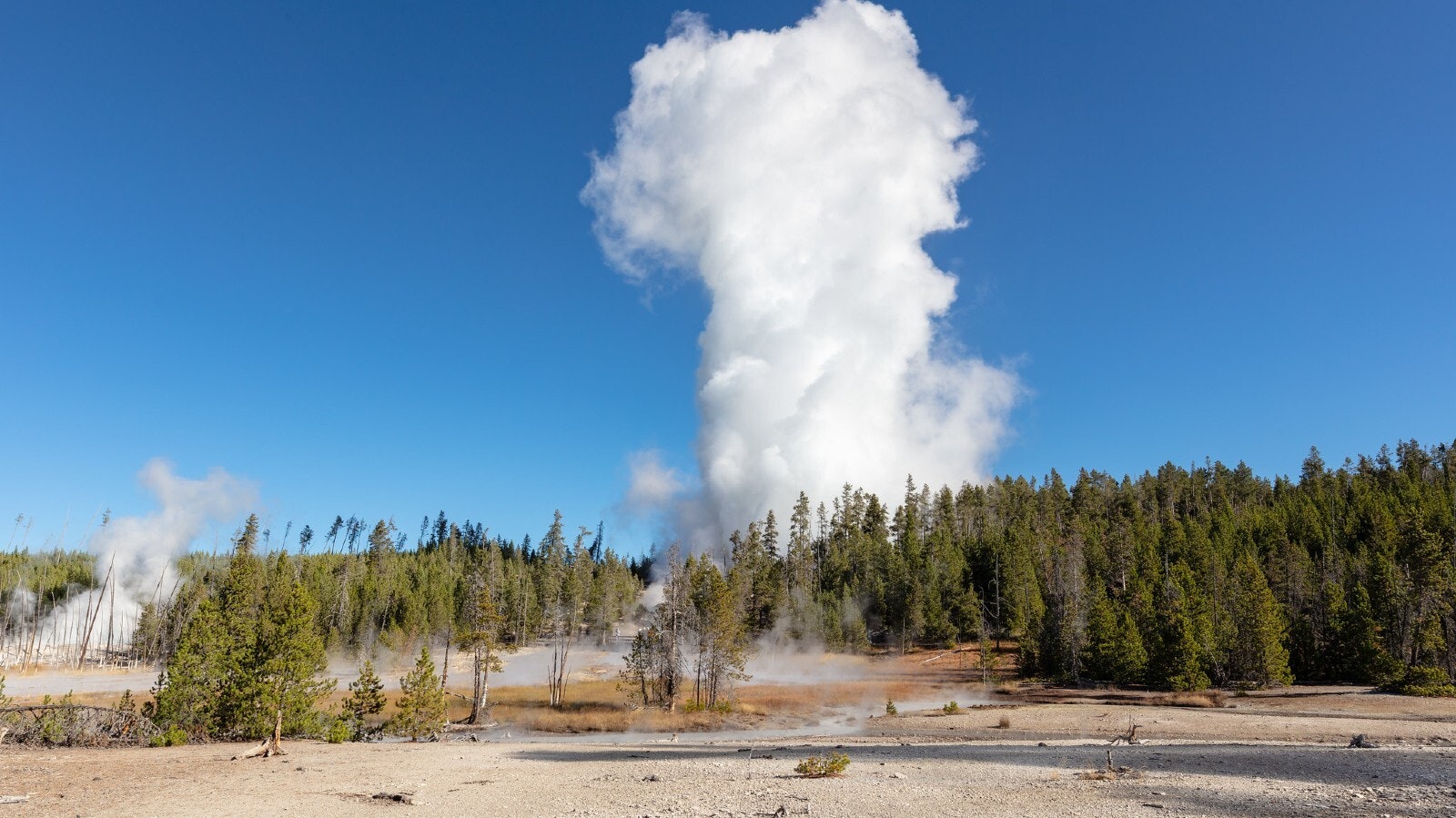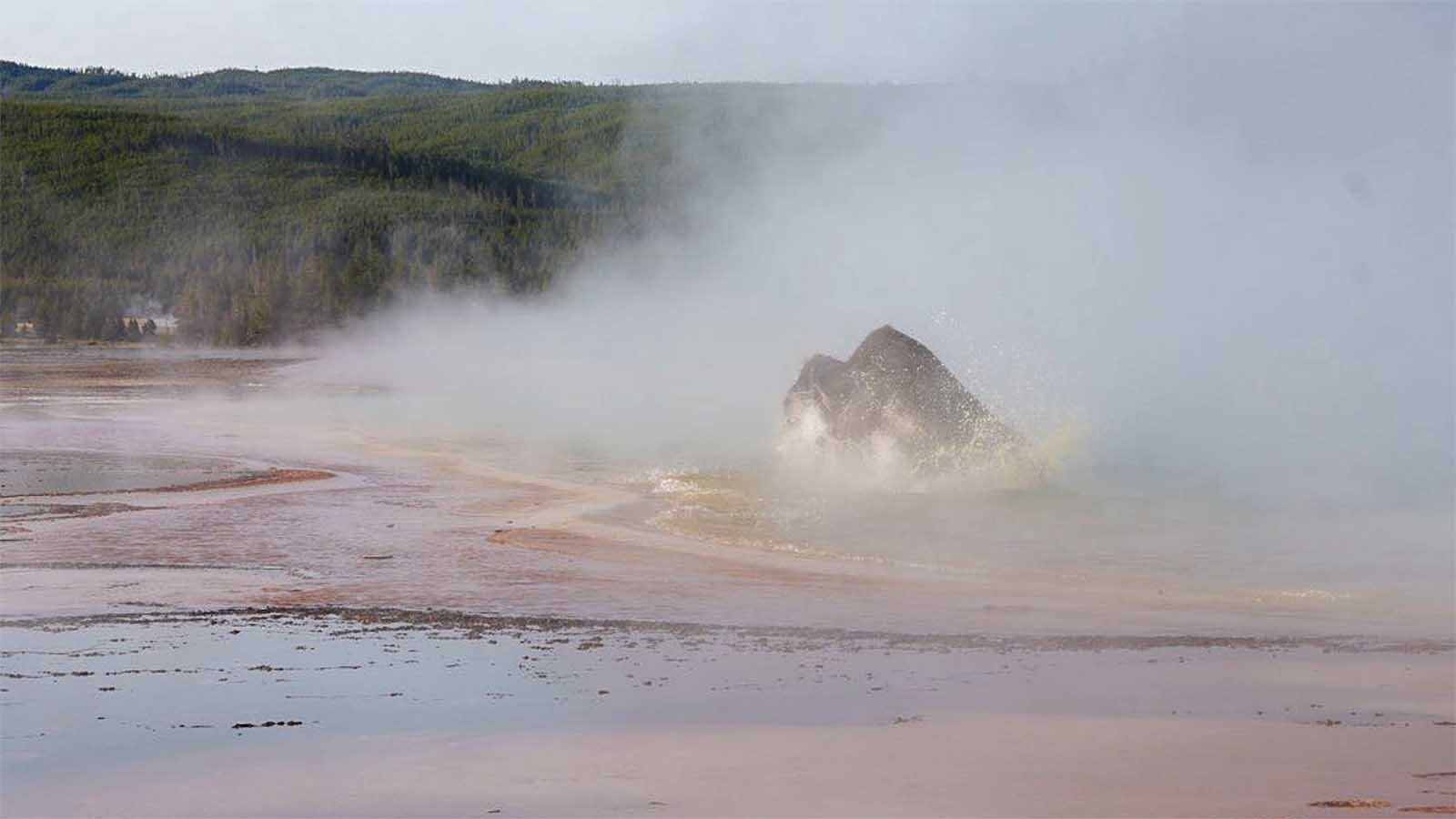A geologist believes that after almost four years of regular activity, the Steamboat Geyser in Yellowstone National Park is likely slowing down again, heading back to “dormancy.”
Michael Poland, the Yellowstone Volcano Observatory’s scientist-in-charge, told Cowboy State Daily on Friday that Steamboat has not been nearly as active recently as it was in 2018, 2019 and 2020, with only four eruptions recorded this year so far.
“Most geysers don’t work like Old Faithful, which, like its name implies, is pretty reliable when it erupts, which is around every 94 minutes,” Poland said. “A lot of geysers have these phases where they go on and off, and Steamboat is a classic example in where it goes decades with very little activity and then suddenly springs to life.”
Steamboat erupted 32 times in 2018, 48 times in 2019 and 2020, but began to slow down in 2021, with somewhere around 20-plus eruptions. Prior to the activity in 2018, the geyser had not been active since 2014.
The other more active periods of Steamboat were between 1982 and 1983, and before that, sometime in the 1960s.
Steamboat is located in the Norris Geyser Basin inside of the park and is the world’s tallest active geyser, shooting plumes of super-heated water up to 400 feet high. But its eruptions are unpredictable, with the last few years marking its most active period in recorded history.
Poland said that due to the more frequent activity at the geyser in recent years, researchers have managed to gather more data about not only Steamboat, but the surrounding area.
“Several research groups have collected seismic data and microphone data for the sounds of the eruptions and there’s research being published about the plumbing system beneath Steamboat that we wouldn’t have been able to see without all this eruptive activity,” he said. “One of the implications is that we can see the hot water plumbing system used by the seismicity associated with the eruptions, and it’s around 300 to 400 feet down.”
If Steamboat does slow down in activity or even go “back to sleep” for several years, Poland would not be surprised. While the geyser’s eruption schedule is unpredictable, Poland thinks it will likely be decades before another active eruption period happens again like in 2018, if it does occur at all.
“I think the best word to describe these geysers is ‘dynamic,’ because they’re always changing,” he said. “Weather events, climate changes and earthquakes can all have an impact on geysers. My predecessor at this job was here for 15 years and saw maybe six Steamboat eruptions. I’ve been here since 2017, and I’ve seen 200. So how lucky am I?”





